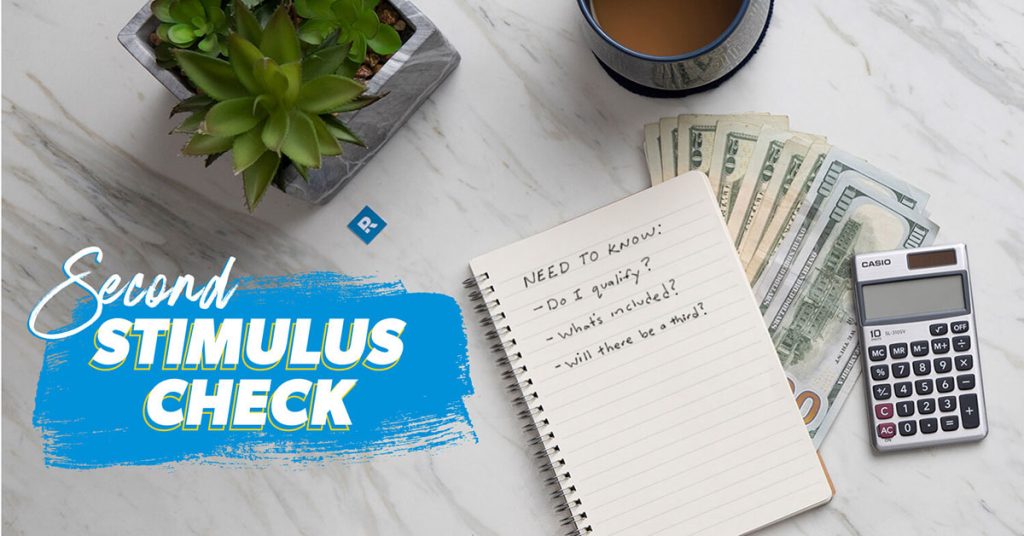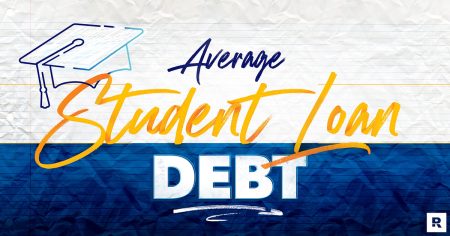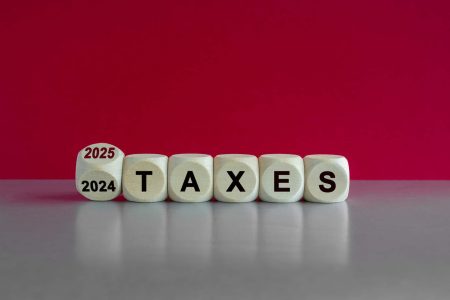If you haven’t checked your bank account in the last few days, it might be worth your time to take a look. The U.S. Treasury Department started sending out the $600 second stimulus payments by direct deposit on December 29, so there’s a good chance yours has already arrived. Payments will continue to hit bank accounts (and mailboxes via paper check or debit card) through the first half of January.1
After months of debate, Congress and President Donald Trump finally approved a second COVID-19 relief package in the last days of 2020. The $600 per person ($1,200 per married couple) payments were part of the package, and the IRS and U.S. Treasury Department didn’t waste any time getting the money to qualifying taxpayers.
How Do I Find Out if I Qualify for the Second Stimulus Check?
Eligibility for the second stimulus check is essentially the same as it was for the first round of stimulus payments in March 2020 under the CARES Act.2 Individuals earning up to $75,000 a year and couples earning up to $150,000 a year are eligible for the full amount. Parents can receive an additional $600 for each dependent child under age 17.
You can find out the status of your second stimulus payment with the IRS’s Get My Payment tool.
What if I Don’t Receive a Second Stimulus Check?
First—don’t freak out. Most people will receive their second stimulus check by direct deposit with the bank account the IRS has on file. The payments are automatic for anyone who filed a 2019 tax return and/or receives Social Security benefits. If you don’t have direct deposit with the IRS, you’ll get your payment as a check or debit card in the mail.
But if you still don’t receive your payment by the end of January, you can claim a credit for it when you file your 2020 income taxes this year. The same goes for the first stimulus payment too. You’ll see it on the 2020 Form 1040 and Form 1040-SR as the Recovery Rebate Credit.3
What Else Is Included in the Stimulus Package?
The bill Congress approved looks a lot different than what they originally considered. Back in the summer when Congress first began talking about the next round of stimulus plans, their wish list included a second stimulus check of $1,200 for every American, $10,000 in student loan forgiveness, and an extension for unemployment benefits through the new year.4 The HEROES Act, as it was called at the time, had a price tag of about $3 trillion, and it never got full congressional approval.5
The relief package that did get the thumbs-up includes, in addition to the $600 direct stimulus check, an extra $300 per week in federal unemployment benefits for folks who are out of a job, small business subsidies, and funding for schools, health care workers and renters who may be facing eviction. The cost is also much lower—by Washington, D.C., standards at least. The final bill is coming out to less than $1 trillion.6
Will There Be a Third Stimulus Check?
Congress and President Trump made a last-minute push to increase the second stimulus payments to $2,000 per person, but ultimately failed to get the increase through all the approval hoops.7 President-elect Joe Biden has said he supports additional aid, including a third stimulus check, once he takes office.8 He’ll have to work with Congress to get new legislation passed for that to happen, so it’s a game of wait and see for now.
What Should You Do if or When You Receive a Stimulus Check?
For some folks, this second stimulus payment—even for $600—is an answer to prayer. For others, it’s a nice-to-have but not necessary to make ends meet. Either way, you’ll want to make the most of any money that ends up in your bank account, right? Here’s where you start:
Save more money for the things that matter (to you) with EveryDollar.
If you’re out of work or missing a paycheck, use this stimulus money to protect your Four Walls:
- Food
- Utilities
- Shelter
- Transportation
Keep food on the table, the lights on, and your rent or mortgage paid. Getting those necessities covered, even for a short time, will give you peace of mind so you can keep looking for work or get your income back up.
If you’re working the Baby Steps and you’re out of work, pause your plan for now. It’s no fun to put the brakes on your momentum, but you need to pile up cash right now until the storm passes. You can also get on a budget—it’s the best way to make your money go further. EveryDollar is a free and simple budgeting app that will help you see exactly where you need to cut back on your spending.
If your job is safe and you feel like it’ll stay that way, then go ahead and use your stimulus money to attack whatever Baby Step you’re on. If you’re paying off debt, keep that snowball rolling. If you’re on Baby Steps 4–7, keep up your retirement investing and do not—one more time because it’s important—do not cash out your investments just because the market is in full roller-coaster mode! Talk to your investment professional if you need some reassurance about sticking to your long-term retirement plan.
The Truth Is, You Don’t Need a Check From the Government to Bail You Out
All this back-and-forth over stimulus payments, how much they should be, and when you might receive one is just proof that you shouldn’t rely on the government for financial help when you really need it. The truth is, you have the power to change your money situation—even in tough times like these. What goes on in your house is way more important than what goes on in Washington, D.C. With Financial Peace University (FPU), you’ll learn how to take control of your own money—so you’ll never have to wait on the government to get its act together ever again. It’s a plan that actually works, and you can try it for free!
Read the full article here










